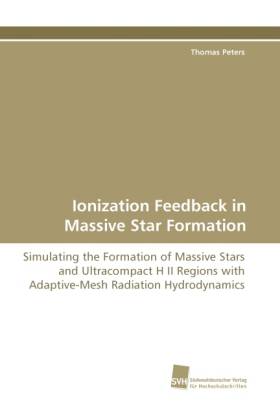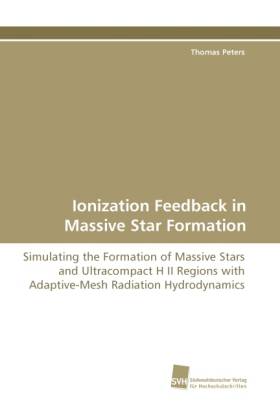
Je cadeautjes zeker op tijd in huis hebben voor de feestdagen? Kom langs in onze winkels en vind het perfecte geschenk!
- Afhalen na 1 uur in een winkel met voorraad
- Gratis thuislevering in België vanaf € 30
- Ruim aanbod met 7 miljoen producten
Je cadeautjes zeker op tijd in huis hebben voor de feestdagen? Kom langs in onze winkels en vind het perfecte geschenk!
- Afhalen na 1 uur in een winkel met voorraad
- Gratis thuislevering in België vanaf € 30
- Ruim aanbod met 7 miljoen producten
Zoeken
Ionization Feedback in Massive Star Formation
Simulating the Formation of Massive Stars and Ultracompact H II Regions with Adaptive-Mesh Radiation Hydrodynamics
Thomas Peters
Paperback | Engels
€ 103,45
+ 206 punten
Omschrijving
Understanding the origin of high-mass stars is central to modern astrophysics. We shed light on this problem using novel radiation-hydrodynamic simulations that consistently follow the gravitational collapse of a massive molecular cloud, the subsequent build-up and fragmentation of the accretion disk surrounding the nascent star, and, for the first time, the interaction between its intense UV radiation field and the infalling material. We show that ionization feedback can neither stop protostellar mass growth nor suppress fragmentation. We present a consistent picture of the formation and evolution of H II regions that explains the observed morphology, time variability, and ages of ultracompact H II regions, solving the long-standing lifetime problem.
Specificaties
Betrokkenen
- Auteur(s):
- Uitgeverij:
Inhoud
- Aantal bladzijden:
- 152
- Taal:
- Engels
Eigenschappen
- Productcode (EAN):
- 9783838117836
- Verschijningsdatum:
- 28/11/2010
- Uitvoering:
- Paperback
- Afmetingen:
- 152 mm x 220 mm
- Gewicht:
- 231 g

Alleen bij Standaard Boekhandel
+ 206 punten op je klantenkaart van Standaard Boekhandel
Beoordelingen
We publiceren alleen reviews die voldoen aan de voorwaarden voor reviews. Bekijk onze voorwaarden voor reviews.









